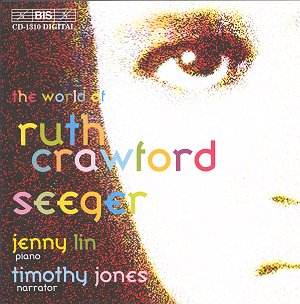 Composer: Gérard Gasparian
Composer: Gérard Gasparian
Works: Intermède for clarinet in A and piano; Cycle Vocale (Frage und antwort, Nimmersatte liebe, Lebewohl, Auf einem Kirchturm); Pulsions for flute and piano; Quintet for 4 saxophones and piano; Ballade for piano; Sonata for violin and piano
Performers: Sylvie Hue (clarinet), Marie Kobayashi (mezzo-soprano), Emmanuelle Ophèle (flute), Hidéki Nagano (piano), Quatuor de Saxophones Jean Ledieu, Yoko Yamasaki (piano), Jean Ter-Merguérian (violin), Gérard Gasparian (piano)
Recording: Recorded Paris 1998/99
Label: Timpani
The music of Gérard Gasparian, a composer whose oeuvre delightfully straddles the line between modernity and accessibility, receives a compelling showcase in this recent recording. Gasparian, born in 1960, has cultivated a voice that, while still maturing, is beginning to resonate distinctly within the contemporary classical landscape. This disc, featuring a selection of chamber works, offers a glimpse into his compositional evolution and influences, while also providing a platform for an impressive array of performers.
The opening piece, Intermède for clarinet and piano, serves as an energetic prelude to the collection. Its manic, fragmented character, juxtaposed with lyrical interludes, evokes the rhythmic intricacies of Poulenc, yet lacks the latter’s characteristic wit. The clarinetist Sylvie Hue navigates this complex terrain with remarkable agility, displaying a technical prowess that enhances the piece’s fragmented nature. The piano, played by Gasparian himself, creates a vibrant backdrop with its motoric textures, even if the earnestness of the music occasionally casts a shadow over the levity one might expect from such interplay.
Following this, the Cycle Vocale, set to Mörike’s German poetry, emerges as a profound exploration of emotional depth. Mezzo-soprano Marie Kobayashi’s interpretation is particularly noteworthy; her ability to convey the nuances of each song, especially in Nimmersatte Liebe, where she employs a striking vibrato-less tone, showcases her vocal mastery. The subtlety with which she and Gasparian approach these difficult passages illuminates the intrinsic beauty of the texts, though the overall earnestness of the music may feel slightly oppressive compared to lighter works in the lieder tradition.
Pulsions for flute and piano continues the exploration of fragmented musical ideas, introducing aleatoric elements that invite an intriguing interplay between the instruments. Here, Emmanuelle Ophèle’s flute work stands out, deftly weaving through the intricate passages with a clarity that complements the piano’s assertiveness. This piece exemplifies Gasparian’s ability to create a dialogue between instruments, highlighting their contrasting timbres while maintaining a cohesive sound.
However, it is the Quintet for 4 saxophones and piano that truly captivates. This work is a testament to the diversity of the saxophone family, with each member contributing to a rich tapestry of sound. The opening movement, with its Ligeti-esque mechanical motifs, sets the stage for the dynamic interactions that follow. The Quatuor de Saxophones, under the assured direction of Jean Ledieu, delivers a performance that balances confidence with the fragility inherent in the piece’s complexities. The piano, often relegated to a supporting role in saxophone ensembles, here emerges as an equal partner, weaving intricate textures that enhance the overall sonic palette.
The recording quality across this disc is commendable, capturing the clarity of each instrument while allowing the subtle nuances of Gasparian’s writing to shine through. Despite a moment of distortion in the song cycle, the overall fidelity enables listeners to appreciate the technical artistry and interpretative depth presented by the performers.
Gasparian’s music, while still in a state of evolution, demonstrates a clear trajectory towards a distinctive voice, enriched by its historical context and contemporary influences. This recording serves as an excellent introduction to his work, revealing both the challenges and rewards of engaging with modern classical music. The performances are not only technically proficient but also imbued with an emotional sincerity that resonates long after the final notes fade.



